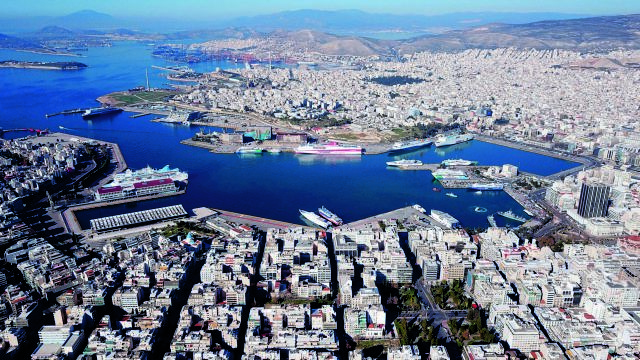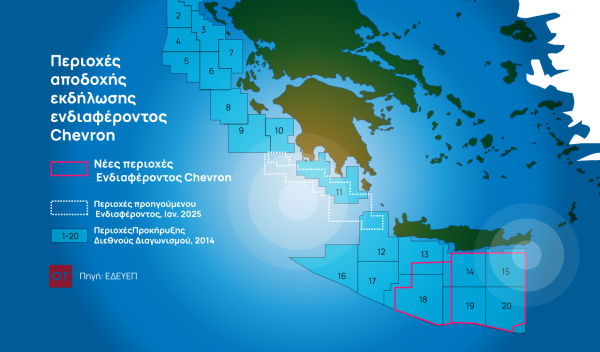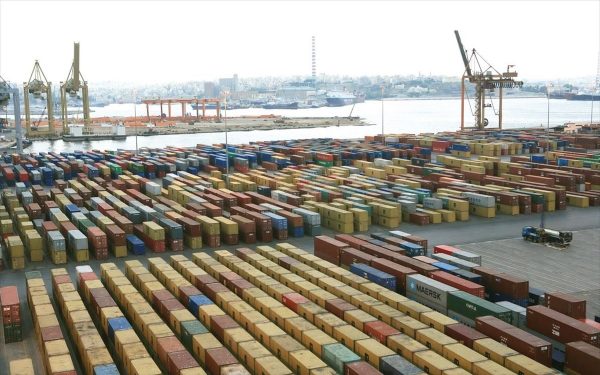
The improvement of Thessaloniki‘s connectivity with global shipping networks and the difficulty of Piraeus to maintain the dynamics it had demonstrated in previous years are recorded in the new edition of the sectoral study on the Greek port industry GREPORT, which is edited by professors Giorgos Vangelas, Thanos Pallis and Evi Kladaki. GREPORT 2022 examines the transport work, traffic and financial data of the country’s major ports.
According to a study, Greek ports need to improve their competitiveness in a rapidly changing environment. The disruption in global transport and supply chains, as well as the increase in the number of blank sailings by container shipping companies, have had knock-on effects in the container freight market and in ports.
In the Mediterranean, the reduction of container ship calls to ports from 2019 to date amounts to 2%. At the same time, the ports are called upon to serve larger ships. The percentage of approaches by ships with a capacity of more than 8,500 TEU increased in 2021 by 3.9% and in 2022 it is increased by 5.2%. This development translates into the management of a larger quantity of containers per approach, with this increase amounting to 5.7% within the three years 2019-2022, Mr. Thanos Pallis, professor at Piraeus University, reports to ot.gr.
In these circumstances, any improvement in the competitiveness of Greek ports is reflected in its connectivity to global networks. According to the data presented by GREPORT2022, in the period 2020-2021 in this sector the Greek port system showed a reversal of the dynamics recorded before 2020.
Port of Piraeus: Recovery at two speeds
The connectivity of Greek ports declined both in absolute terms and in comparison with neighboring ports, says Mr. George Vangelas, associate professor at the University of the Aegean. The distance to neighboring Italian ports has widened, returning to the levels it was a decade earlier. It is indicative that at the end of 2021, after a four-year break, Turkish ports again show greater connectivity than Greek ports.
The trend in Piraeus is of course decisive. From 2020 to the third quarter of 2022, the connectivity of the port of Piraeus to the global container transport network did not show the dynamics of the period it showed in previous years, remaining at the levels of 2019. At the same time, in the first three quarters of 2022 , the handling of containers appears reduced by 10.5% compared to the corresponding period of 2021, the study of Greek scientists points out.
Of course, the port of Piraeus continues to be directly connected to some of the largest port hubs in the global maritime transport network. In particular, the port in 2021 was connected directly (origin-destination) with Singapore with 25 routes per month, Port Klang (Malaysia) with four connections and with the European ports of Rotterdam and Antwerp with 16 and 13 monthly connections respectively. In the same period, the largest container ship in capacity that served the port of Piraeus in 2022 (January – July data) had a capacity of 23,992 TEU, when the corresponding size for 2021 was 21,413 TEU and in 2020 it was 21,400 TEU.
Although Piraeus is included in the largest container ports worldwide, in 2021, the port fell to 33rd place in the relative ranking, from 28th place in 2021. In the European area, it occupies 5th place in the relative ranking of container ports, which according to the figures of the first three quarters, despite the decrease in traffic, are expected to be maintained in 2022.
In the same period, the connectivity of the port of Thessaloniki appears to be particularly improved – although, as expected, it is at lower levels than Piraeus. The relevant index (Liner Shipping Connectivity Index) of the port increased in the third quarter of 2022 to higher levels compared to the beginning of the decade, while the last quarter of 2021 was at the highest historical level of the fifteen years for which relevant measurements are available, points out the industry study.
As in the case of Piraeus and in the port of Thessaloniki, the size of the largest container ship approaching the port increased significantly. In 2022 the largest ship had a capacity of 6,722 TEU compared to 5,730 TEU in 2021 and 5,300 TEU in 2020.
As GREPORT 2022 records, the necessary investments and the formation of conditions and strategies to further improve the capacity of the Greek port system remain necessary so that it can efficiently and effectively serve the transported cargoes. Together with the expansion of the range of services offered to transported loads before the transport of transported goods to their final destination, they are conditions for expanding the number of containers served by Greek ports and increasing the connectivity of the Greek economy with the rest of the world.
Latest News

Airbnb: Greece’s Short-Term Rentals Dip in March Amid Easter Shift
Data from analytics firm AirDNA shows that average occupancy for short-term rentals dropped to 45% in March, down from 49% the same month last year.

Easter Week in Greece: Holy Friday in Orthodoxy Today
At the Vespers service on Friday evening the image of Christ is removed from the Cross and wrapped in a white cloth

Meloni and Trump Meet in Washington, Vow to Strengthen Western Ties
“I am 100% sure there will be no problems reaching a deal on tariffs with the EU—none whatsoever,” Trump stressed.

ECB Cuts Interest Rates by 25 Basis Points in Expected Move
The ECB’s Governing Council opted to lower the deposit facility rate—the benchmark for signaling monetary policy direction—citing an updated assessment of inflation prospects, the dynamics of underlying inflation, and the strength of monetary policy transmission.

Current Account Deficit Fell by €573.2ml Feb. 2025: BoG
The improvement of Greece’s current account was mainly attributed to a more robust balance of goods and, to a lesser extent, an improved primary income account

Hellenic Food Authority Issues Food Safety Tips for Easter
Food safety tips on how to make sure your lamb has been properly inspected and your eggs stay fresh.

Greek Kiwifruit Exports Smash 200,000-Ton Mark, Setting New Record
According to data by the Association of Greek Fruit, Vegetable and Juice Exporters, Incofruit Hellas, between September 1, 2024, and April 17, 2025, kiwifruit exports increased by 14.2%.

Easter Tourism Boom: Greece Sees 18.3% Surge in Hotel Bookings
Among foreign markets, Israel has emerged as the biggest growth driver, with hotel bookings more than doubling—up 178.5% year-on-year.

Greece to Launch Fast-Track Tender for Offshore Hydrocarbon Exploration
Last week, Papastavrou signed the acceptance of interest for the two Cretan blocks, while similar decisions regarding the two Ionian Sea blocks were signed by his predecessor

American-Hellenic Chamber of Commerce to Open Washington D.C. Branch
AmCham's new office aims aims to deepen U.S.-Greece economic ties and promote investment and innovation between the two countries







![Πλημμύρες: Σημειώθηκαν σε επίπεδα ρεκόρ στην Ευρώπη το 2024 [γράφημα]](https://www.ot.gr/wp-content/uploads/2025/04/FLOOD_HUNGRY-90x90.jpg)




![Airbnb: Πτωτικά κινήθηκε η ζήτηση τον Μάρτιο – Τι δείχνουν τα στοιχεία [γράφημα]](https://www.ot.gr/wp-content/uploads/2024/07/airbnb-gba8e58468_1280-1-90x90.jpg)

























![Airbnb: Πτωτικά κινήθηκε η ζήτηση τον Μάρτιο – Τι δείχνουν τα στοιχεία [γράφημα]](https://www.ot.gr/wp-content/uploads/2024/07/airbnb-gba8e58468_1280-1-600x500.jpg)


 Αριθμός Πιστοποίησης
Αριθμός Πιστοποίησης